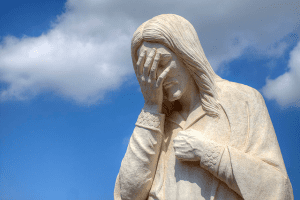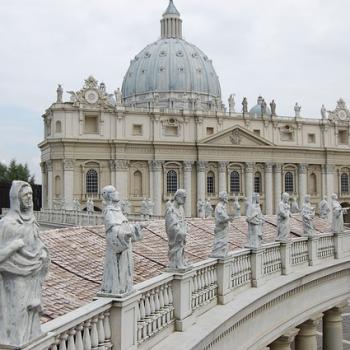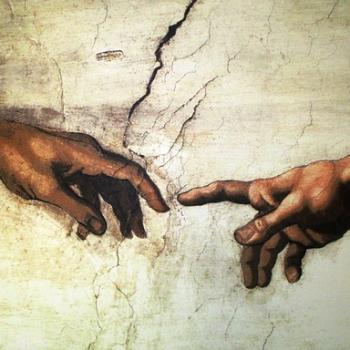
Due to my love of films and my being a glutton for punishment in general, and due to the inexplicable popularity of my panning of God’s Not Dead 2, I have already decided to review another Pure Flix film, I Am Not Ashamed: The Rachel Joy Scott Columbine Story, when it comes out in September. And I’m trying to keep an open mind about it– it’s based upon the actual writings of the Columbine victim herself, who seems like a fine person, so it may be nice despite its inelegantly stringy title.
I would be more capable of keeping an open mind if I hadn’t read the film’s synopsis on IMDb. “It is the true story of a high school student whose compassionate, caring faith caused her to reach out to fellow students including her killers who made her a target of their murderous plan.” Lord have mercy. Let’s look at this sentence, shall we? Was it not bad enough that her killers were her killers? Did they also have to make her a target of their plan, and a murderous plan at that? Did they also go home to eat fire-burnt tautologies while sitting on their sitting chairs and slobbering slobbery slobber? Who writes like this? This is the description of the film on the Internet Movie Database. It’s what people look at when they’re deciding whether they want to watch the film or not. And it reads as though it was penned in glitter gel by the director’s ten-year-old niece after reading a Baby-Sitters’ Club novel.
I went to the film’s official website, which contains another synopsis written by a ten-year-old. “Two teenage boys entered their high school with guns and homemade bombs with a plan to kill hundreds of their classmates.” And then, “Drawn directly from her journals and writing, we discover a story of hope in this tragedy.” Heaven help us. The sentence subjects don’t agree with the predicates unless we’re the ones being drawn from the journals and writing; there are no commas where there ought to be commas; an “and” was omitted for no reason whatsoever. For a movie all about faith in God, I Am Not Ashamed: The Rachel Joy Scott Columbine Story is already shaping up to be an ungodly mess. I choose to believe I’ll be pleasantly surprised when I see the film. I choose to believe, because otherwise I’ll lose my mind before September.
The heinous nature of popular Christian art is a topic which baffles me. Why would anyone do this to Jesus, of all people, the One who deserves our best? As a child I was taken to Christian music concerts, where I sat politely and quietly and tried not to laugh; I listened to Christian rock on the radio, and tried to be reverent. This was praise, after all. Praise is sacred. We ought to respect others’ prayers, even if we don’t understand what on earth they’re trying to say. But for mercy’s sake: “God is bigger than the air I breathe?” What does that mean, Christ Tomlin? It’s gibberish. Most theists believe in a God not big enough to be choked on. Why even bring it up? And I’m not letting David Crowder off the hook either, even though I rather like “You Alone.” It’s intensely comical to sit in a crowded church chorusing “I’m alive! I’m alive! I’m alive! I’m alive!” as if we were baby existentialists. And those are just hymns. I’ve had to sit through horrible films, God’s Not Dead 2 not being the least of them; I’ve read several of the Best Friends series by Hilda Stahl. I’ve squinted at bad visual art. No one has ever explained to me why, on my local Catholic university’s campus, there’s an ugly Babylonian-style Bas Relief of Saint Francis with a boulder on his head right above Student Accounts, or why the chapel is shaped like a toilet.
The defense of bad Christian artists is usually along the lines of, “they were trying to do a good thing. They entrust their work to the Holy Ghost. Imagine if it touched even one heart!” Consider what life would be like if this was how we judged other professions. Imagine if a bad trauma surgeon was defended with this excuse, after he’d punctured somebody’s heart. Imagine a second grade teacher who was illiterate but tried very hard, for Jesus. Imagine if Michellin-starred chefs suddenly started serving beanie weenies and trusting the Holy Ghost to move their patrons anywhere but the toilet– not the toilet-shaped chapel but the real one. This would be blasphemy. Yet artists somehow get a pass.
Artists are as necessary to human well-being as doctors and cooks are; indeed, they serve the same purpose. Artists heal, teach and feed the culture and the individual mind. Our health as a culture and as rational beings is wrapped up in the quality of the arts we consume. Works of art change whole cultures for better or for worse. They influence each human psyche in a thousand ways. Shouldn’t art directed at extolling God be the finest art? Shouldn’t art meant to touch the heart be designed to move hearts even without the extraordinary and miraculous intervention of the Holy Ghost? Christians ought to be the ones denouncing bad Christian art the loudest, yet here we are. Youth groups arranged to go and “support” God’s Not Dead together, and they will surely do so for I Am Not Ashamed: The Rachel Joy Scott Columbine Story as well. Bad “Christian” music continues to be foisted upon us as a worship aid, and I still go to Mass inside a giant toilet. It’s difficult enough for we who believe in Christ to take our worship seriously under these circumstances; unbelievers are surely getting the impression that Christ is a kitschy joke. That’s a tragedy if there ever was one.
There are plenty of examples of good Christian art as well, art that actually moves the soul and presents Christ as something other than a caricature. But for every Charles Williams there are a hundred kitschy proselytizing novelists clogging the bookstores, and for every Shadowlands there’s an outfit like Pure Flix producing trash like God’s Not Dead. Christians ought to be the first people to get angry about this. We ought to be filling the world with things that are good, pure, lovely and worthy of praise; things that challenge the mind and speak truths to the culture. Bad art does not accomplish this, and it’s a deadly serious business.
Edited to add: For all of you who have been asking me on Facebook what we should do about this and what good art is, here’s the beginning of an answer in my next post. I will be making other suggestions as we blog along.
Also, if anyone wants a serious meditation on the untruths in God’s Not Dead 2 and a Christian answer to the problem of suffering, I’ve written one of those as well.
(Image courtesy of Pixabay)












